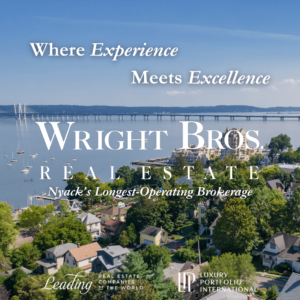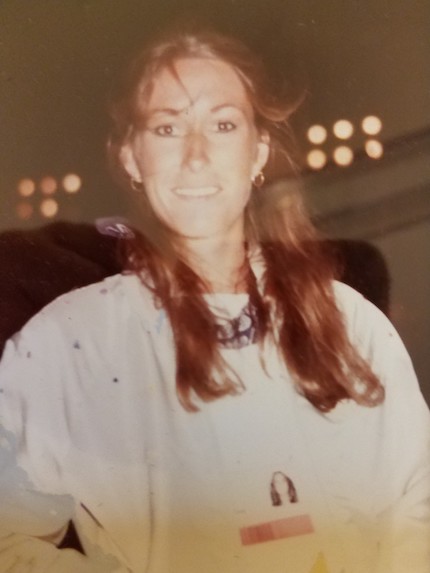
Sue Webb
by Sue Webb
My sister Mary was my golden ticket to the 1984 Olympic Games in Los Angeles. She had gotten a job working on opening and closing ceremonies in late ’83. After a year on the road, I’d finally decided I couldn’t stand one more day driving an 18-wheeler around the country, moving household furnishings, with my boyfriend, and was couch surfing at my other sister, Christy’s, house and trying to see what I could come up with for gainful employment.
I think it was January of ‘84. I submitted my resume, and Mary got me an interview with the Supervisor of Costumes and Props, who was in need of a coordinator of some sorts. There were lots of logistics involved, and my past experience both dispatching and driving trucks helped land me the job. It became the opportunity and experience of a lifetime.
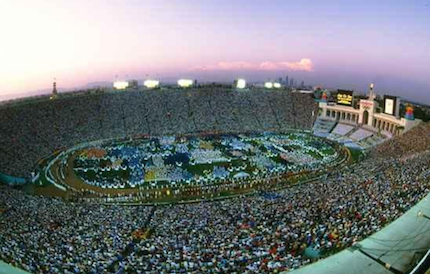 Opening and Closing Ceremonies headquarters were in a big glass tower in Westwood – one really big floor with lots of still empty offices and cubicles. Before I could settle in, I had to go spend a few weeks at the LAOOC’s (Los Angeles Olympic Organizing Committee) main headquarters in Marina del Rey. It was this huge, cavernous hanger with giant fabulous signage hanging down from the ceiling everywhere to direct you to various areas (USC Village, Transportation, Sports Administration, Olympic Arts Festival, etc.) where all the departments worked and trained. Hundreds of people were hustling and bustling all over the place – You were instantly aware that you were somewhere “important,” and the energy was almost palpable. I was led to an area called Logistics, where I met up with about 25 other “Supply Operations Coordinators,” who were all there for training. Each sport had one, plus me for Ceremonies. I seem to remember I may have been the only woman!
Opening and Closing Ceremonies headquarters were in a big glass tower in Westwood – one really big floor with lots of still empty offices and cubicles. Before I could settle in, I had to go spend a few weeks at the LAOOC’s (Los Angeles Olympic Organizing Committee) main headquarters in Marina del Rey. It was this huge, cavernous hanger with giant fabulous signage hanging down from the ceiling everywhere to direct you to various areas (USC Village, Transportation, Sports Administration, Olympic Arts Festival, etc.) where all the departments worked and trained. Hundreds of people were hustling and bustling all over the place – You were instantly aware that you were somewhere “important,” and the energy was almost palpable. I was led to an area called Logistics, where I met up with about 25 other “Supply Operations Coordinators,” who were all there for training. Each sport had one, plus me for Ceremonies. I seem to remember I may have been the only woman!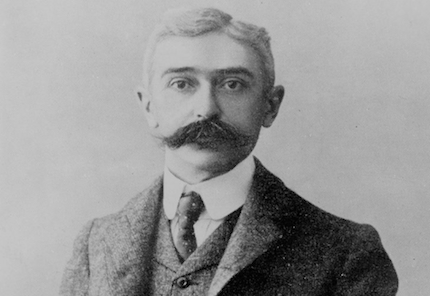
Baron Pierre de Coubertin
We were given volumes of Olympic history to study; Policies of the Olympic Organizing Committee to memorize; Maps of the entire Los Angeles County area (over 500 square miles!) showing where all the venues were located. So much information! I learned about Baron Pierre de Coubertin, considered the founder of the modern Olympic Games, who was instrumental in bringing the first world competition to Athens Greece in 1896. The Olympic flag with the 5 rings made its first appearance in 1920 at Antwerp. The first Olympic Torch Relay was run at the 1936 games in Berlin. We were told we might be tested on any of this. Alas, in the end there was no test; just a well-executed scheme to ensure we had some actual Olympic knowledge in us before we were dispatched throughout the city to our various venues to begin our real work.
One day in Spring, the entire Ceremonies staff were called into the conference room. We jammed in there and David Wolper, the Producer, allowed us to be the first to hear the completed “Olympic Fanfare and Theme,” the original music commissioned specifically for the Games by the iconic popular composer John Williams. As the music pumped through the speakers we all stood there with our eyes big as saucers, knowing we were hearing something truly “history in the making.”
The music we hear during every Olympic Games is actually a compilation of two great compositions being melded into one exciting arrangement of orchestrated art. The actual birth of the piece started with Leo Arnaud in 1958 when he composed, “Bugler’s March.” ABC was the first to utilize this composition as their opening theme during the 1964 Winter Olympics in Innsbruck, Austria.
In 1992 NBC merged what was then the traditional theme for the Olympics and Williams’ “Fanfare,” to create the ubiquitous medley we know today, and has become synonymous for every Olympics since. Magic!
Logistics involved lots of movement of people and things. Staff moves – we would eventually grow into almost 100 people – I was responsible for 3 separate moves of all staff within a 5-week period, from right before Opening to just after Closing Ceremonies. Setting up all temporary offices. Finding and staffing a Props and Costumes Fitting Center (for about 9000 participants). The movement of all band instruments from one location to another.
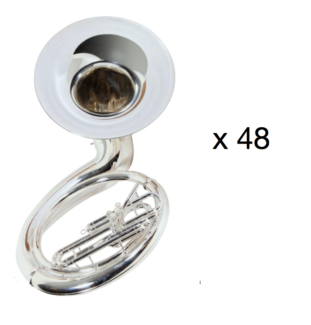 The Olympic Marching Band comprised over 800 college musicians from every state in the union. We had trucks pick up band equipment at Pepperdine University in Malibu at midnight after a practice [including one 40-footer that had 48 sousaphones in it] and driving it all 31 miles downtown to the Coliseum, parked and unloaded by 7am the following morning for the band to practice on the field. It was the only time the band could get on the field with all the other rehearsal groups fighting for time. Do reverse that night – repeat. The Coliseum folks were so nervous about us ruining the pristine green grass of the infield and the brand-new Recatan track they’d laid in preparation for the Games, they wouldn’t even let us rehearse on it until less than 1 week before Opening. There were 1200 drill team members that first morning, and each of them had a 4-inch round disc with a number on it imbedded with a spike into the soil where they started so they could hit their marks. Well, surprise! The grass was dead within 2 days. After a panicked day or so spent researching where to find an infield full of perfect grass to replace it with and coming up empty, someone came up with the brilliant idea of spray painting it all a vibrant green. Voila! Problem solved.
The Olympic Marching Band comprised over 800 college musicians from every state in the union. We had trucks pick up band equipment at Pepperdine University in Malibu at midnight after a practice [including one 40-footer that had 48 sousaphones in it] and driving it all 31 miles downtown to the Coliseum, parked and unloaded by 7am the following morning for the band to practice on the field. It was the only time the band could get on the field with all the other rehearsal groups fighting for time. Do reverse that night – repeat. The Coliseum folks were so nervous about us ruining the pristine green grass of the infield and the brand-new Recatan track they’d laid in preparation for the Games, they wouldn’t even let us rehearse on it until less than 1 week before Opening. There were 1200 drill team members that first morning, and each of them had a 4-inch round disc with a number on it imbedded with a spike into the soil where they started so they could hit their marks. Well, surprise! The grass was dead within 2 days. After a panicked day or so spent researching where to find an infield full of perfect grass to replace it with and coming up empty, someone came up with the brilliant idea of spray painting it all a vibrant green. Voila! Problem solved.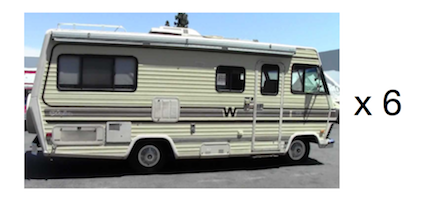 I had to procure 6 Winnebago motor homes for our top executives while we were ensconced at the Swim Stadium prior to Opening. Every square inch of the parking lots around the Coliseum and Swim Stadium next door (where we had our offices; it was very old and not the venue used for swim events) was filled to the brim and over with Broadcasting trucks, equipment, and trailers; Operations, transportation, Press, Government Relations, Staffing Control, Exposition Park, Medical facilities, technology, you name it…it was the tightest of puzzles to find and allocate space for everyone wanting in.
I had to procure 6 Winnebago motor homes for our top executives while we were ensconced at the Swim Stadium prior to Opening. Every square inch of the parking lots around the Coliseum and Swim Stadium next door (where we had our offices; it was very old and not the venue used for swim events) was filled to the brim and over with Broadcasting trucks, equipment, and trailers; Operations, transportation, Press, Government Relations, Staffing Control, Exposition Park, Medical facilities, technology, you name it…it was the tightest of puzzles to find and allocate space for everyone wanting in.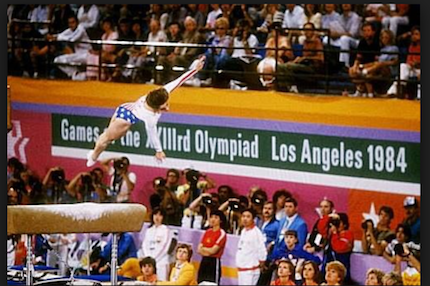
Mary Lou Retton
The day those 6 Winnebago’s rolled onto the lot, I had been given specific homes for 5 of them (for Producer, Director, Choreographer, etc…) where they would park, get plugged in, and be used for the next 10 days or so. The sixth one rolled in, and I realized there was no designated space for it – no room – so I told the driver to park it in one of the outer lots a little farther out. I’d figure out what to do with it later. By the next day I realized that no one had claimed it, nor did anyone but me know it was even there…SCORE! Sue got her own Winnebago for select friends and staff. There was no power out there, so one afternoon I took a bicycle and rode across the street to the nearest bodega and bought a case of cold beer. Headed over to where all the electricians were hanging out. I knew these guys; they’d helped me get the swim stadium ready for the first staff move a few weeks prior. Tables and chairs and phones and electricity up the Wazoo. We were buds! “Hey guys,” I said as I pulled up on my bike, “I bought you some beer for a hot afternoon.”
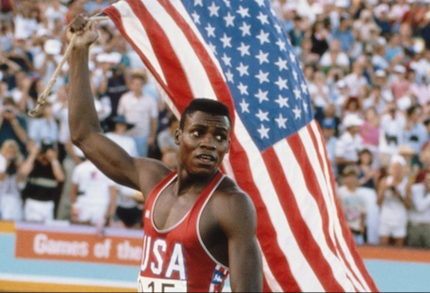
Carl Lewis
“Hey, thanks Sue!” We started talking and I casually mentioned that I’ve got this motor home out in the back nine and gee, could they help me get it hooked up to the generator so I could get some power and A/C to cool it down?
“Sure, hon, we’ll take care of it. Where is it? We’ve got time, we can do it now.” God bless them, we were up and running within the hour. Take care of the people you work with and treat them well, and they will take care of you. I’ve always done it and, almost without exception, they always have.
It became the party Winnebago, natch. I only let a few favorite people know about it, (only the fun ones). It was Heaven to have a quiet, cool place to go hide for a half hour and have a cold beer and whatever else we needed to get through the day (it was the 80’s after all). We were all working 18+ hours a day, it was hot as hell, and it was hard to go anywhere on site where there weren’t gobs of people around all trying to get things ready. A cool oasis in the desert of downtown L.A.
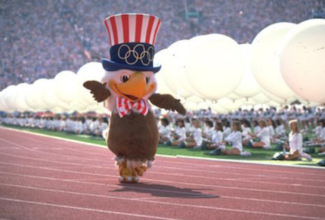
Sam the Eagle
The energy leading up to Opening Day was electric! The pressure was on. Sam the Eagle was the Olympic mascot of the games, and the animated image was being used everywhere on every piece of merchandise, and signage, and commercial product tie in you could come up with. One of our surprises was that we were planning to use a real bald eagle in the Opening – we had a handler who practiced with one in the stadium for a week or so beforehand. Very shortly before Opening, “Sam” was rehearsing his flying on the field and something happened – he fell to the ground and died. It was heartbreaking and funny at the same time. Nothing like a live show to turn up the heat. Oh well. We had no replacement eagle and no mention of him was ever made during the Games.
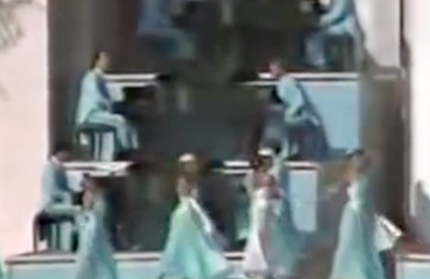 One of the most dramatic numbers in the show was the Rhapsody in Blue sequence. American George Gershwin was only 26 years old when he composed his most famous work. The plan was for 84 pianos to come out from the 14 arches of the peristyle at the front end of the coliseum. These huge 3 level platforms with risers were built to each hold 6 pianos, 2 facing each other on each level. They were moved by forklifts inside which slid them out the arches into position for the number. It was very dramatic to see 84 black Kimball Grands roll out as 84 piano players began playing Rhapsody in Blue. It’s a piece that requires great skill and finesse and they’d auditioned hundreds of piano players before selecting the winners. They had also picked out a few of the piano players who they would zero in on with the cameras to get close ups of their hands. Because of the live broadcast the finger action of the music had to be exact. The music sounded sublime. Except it was all pre-recorded because you couldn’t trust that the live music would carry, so all of the pianos had the wood bar placed over the hammers to render them silent. So much smoke and mirrors.
One of the most dramatic numbers in the show was the Rhapsody in Blue sequence. American George Gershwin was only 26 years old when he composed his most famous work. The plan was for 84 pianos to come out from the 14 arches of the peristyle at the front end of the coliseum. These huge 3 level platforms with risers were built to each hold 6 pianos, 2 facing each other on each level. They were moved by forklifts inside which slid them out the arches into position for the number. It was very dramatic to see 84 black Kimball Grands roll out as 84 piano players began playing Rhapsody in Blue. It’s a piece that requires great skill and finesse and they’d auditioned hundreds of piano players before selecting the winners. They had also picked out a few of the piano players who they would zero in on with the cameras to get close ups of their hands. Because of the live broadcast the finger action of the music had to be exact. The music sounded sublime. Except it was all pre-recorded because you couldn’t trust that the live music would carry, so all of the pianos had the wood bar placed over the hammers to render them silent. So much smoke and mirrors.It was an exciting number. Getting it ready took many days of prep and once the pianos arrived, they stood around in the sun until it was time to lift them into place on the platforms. More days of baking in the sun and many of the pianos suffered warping sufficient to make them unusable after the show. Such a wasteful and costly price to pay for these gorgeous musical instruments – all in the name of entertainment!
The day before Opening was Dress Rehearsal. It was the only time the entire show would run through (without the athletes or torch lighting of course) prior to Opening. It would be the only time staff would be able to see it, and we got to invite family and friends. Even with over 90,000 seats, there was no room for most of us for the show; it was without doubt the biggest ticket in town by far and everyone was clamoring for tickets. The rehearsal was spectacular and I remember leaving that night ecstatic that we were going to put on one hell of a show the next day!
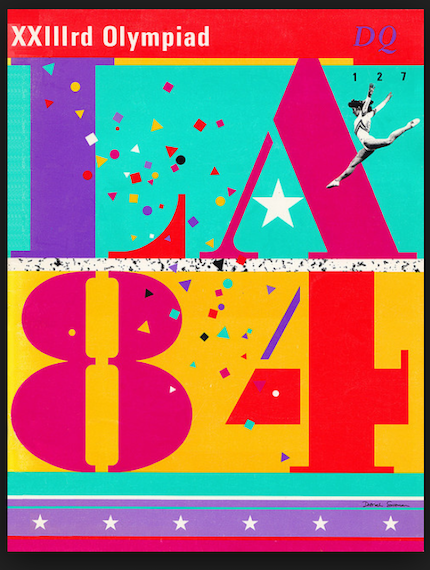 Opening day, I woke up not feeling well and deteriorated throughout the day. It figured. We were all working ourselves to death getting everything ready. A few of us got to crouch in an aisle up by the Peristyle for the beginning of the show; 150 trumpets and 20 timpani sounding the “Fanfare Olympique” to announce the start of Opening Ceremonies. It wasn’t long before we were all booted out. I remember laying down in the Winnebago that day and then later sitting on a golf cart right outside the tunnel where the Parade of Nations were queuing into position behind each country’s placard and flag bearers – leading their delegations onto the field. I was sick as a dog at that point, running a fever, and I was watching thousands of athletes in their Olympic finery, laughing and taking pictures and holding flags and souvenirs – realizing how monumental it was to be this close and to witness this – and all I wanted to do was go to bed. So that’s what I did – I went to the motorhome and slept for a few hours. Someone came in and saw me and ordered me to go home. I remember driving home acutely aware of how sick I was and that I should not be driving, and then early the next morning I woke up and came right back for another 16-hour day – so sick I could hardly walk. When you’re putting on a show the world is watching, you do what you gotta do.
Opening day, I woke up not feeling well and deteriorated throughout the day. It figured. We were all working ourselves to death getting everything ready. A few of us got to crouch in an aisle up by the Peristyle for the beginning of the show; 150 trumpets and 20 timpani sounding the “Fanfare Olympique” to announce the start of Opening Ceremonies. It wasn’t long before we were all booted out. I remember laying down in the Winnebago that day and then later sitting on a golf cart right outside the tunnel where the Parade of Nations were queuing into position behind each country’s placard and flag bearers – leading their delegations onto the field. I was sick as a dog at that point, running a fever, and I was watching thousands of athletes in their Olympic finery, laughing and taking pictures and holding flags and souvenirs – realizing how monumental it was to be this close and to witness this – and all I wanted to do was go to bed. So that’s what I did – I went to the motorhome and slept for a few hours. Someone came in and saw me and ordered me to go home. I remember driving home acutely aware of how sick I was and that I should not be driving, and then early the next morning I woke up and came right back for another 16-hour day – so sick I could hardly walk. When you’re putting on a show the world is watching, you do what you gotta do.
 Sue Webb grew up in North Hollywood, in the San Fernando Valley section of Los Angeles. The Olympics were her first foray into production and she followed it up with stints in movies, TV, and eventually, live theatrical production. She worked in the Themed Entertainment Industry on projects for Universal and Disney, which took her to such far flung locales as Japan, England, and Thailand. 20 years ago, she came to NYC for a Disney project, and eventually made her way to Nyack, where she has been ever since.
Sue Webb grew up in North Hollywood, in the San Fernando Valley section of Los Angeles. The Olympics were her first foray into production and she followed it up with stints in movies, TV, and eventually, live theatrical production. She worked in the Themed Entertainment Industry on projects for Universal and Disney, which took her to such far flung locales as Japan, England, and Thailand. 20 years ago, she came to NYC for a Disney project, and eventually made her way to Nyack, where she has been ever since.
Between stints as a Project Manager, Property Manager, Professional Organizer and, most recently, a Realtor with Nyack based Weld Realty, Sue wears many hats and loves the versatility this offers. In her spare time, she loves to hike and run the trails, cook for friends and, of course, as a native Californian, spend as much time as possible at the beach. She is currently at work on a memoir. She can be reached at sue@weldrealty.com
This is the last installment for 2018 of Words & Images, a column that features the work of students from Bill Batson’s, Writing Your Truth memoir class. This weekly feature has been sponsored by River River Writers Circle.

